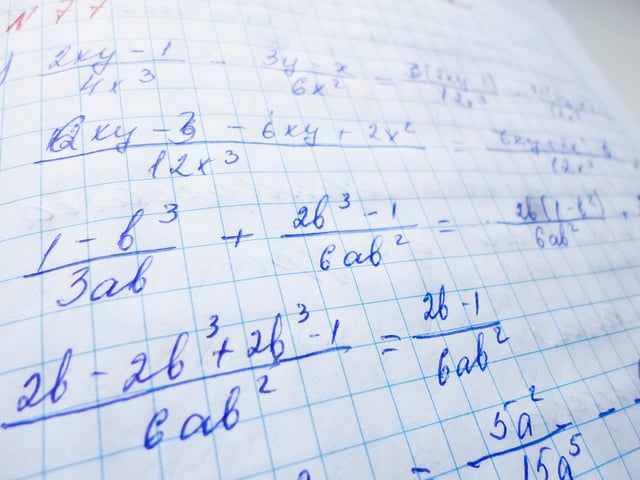
Formula Chart for the Passport to Advanced Math Questions on the SAT® Test
Just as there are requirements to get a passport to travel, you’ll need to fulfill a series of requirements if you want to ace the 16 Passport to Advanced Math Questions on the SAT® Test. The most important requirement is the ability to analyze, rewrite, and manipulate mathematical expressions, but that requires practice.
That’s why we have the tools you need at Union Test Prep! You can check our study guides and try your hand at our Passport to Advanced Math practice test. And you can check the following chart, which has the essential formulas you’ll need to manipulate and analyze and get your passport!
We also have formula charts for the other three areas of math covered on the SAT® Math Test:
But, for the Passport to Advanced Math questions, here are the necessary formulas:
| Category | Formula | Symbols | Comment |
|---|---|---|---|
| Passport to Advanced Math |
\(x+a=b \Rightarrow x=b-a\) \(x-a=b \Rightarrow x=b+a\) \(x \cdot a=b \Rightarrow x=b \div a\) \(x \div a=b \Rightarrow x=b \cdot a\) \(x^a=b \Rightarrow x = \sqrt[a]{b}\) \(\sqrt[a]{x}= b \Rightarrow x= b^a\) \(a^x=b \Rightarrow x=\frac{log\ b}{log\ a}\) |
a, b = constants x = variable |
|
| Passport to Advanced Math |
\(\dfrac{a}{b} + \dfrac{c}{d}= \dfrac{(a \cdot d)+(c \cdot b)}{(b \cdot d)}\) | a, b, c, d = any real number | Remember to simplify the fraction if possible. |
| Passport to Advanced Math |
\(\dfrac{a}{b} \cdot \dfrac{c}{d}= \dfrac{(a \cdot c)}{(b \cdot d)}\) | a, b, c, d = any real number | Remember to simplify the fraction if possible. |
| Passport to Advanced Math |
\(\dfrac{a}{b} \div \dfrac{c}{d}= \dfrac{(a \cdot d)}{(b \cdot c)}\) | a, b, c, d = any real number | Remember to simplify the fraction if possible. |
| Passport to Advanced Math |
\(a\dfrac{b}{c} = \dfrac{(a \cdot c)+b}{c}\) | a, b, c = any real number | Remember to simplify the fraction if possible. |
| Passport to Advanced Math |
\(x^a \cdot x^b = x^{a+b}\) | a, b, x = any real number | |
| Passport to Advanced Math |
\(\dfrac{x^a}{x^b}=x^{a-b}\) | a, b, x = any real number | |
| Passport to Advanced Math |
\((x^a)^b=x^{a \cdot b}\) | a, x = any real number | |
| Passport to Advanced Math |
\((x \cdot y)^a=x^a \cdot y^a\) | a, b, x, y = any real number | |
| Passport to Advanced Math |
\(x^1 = x\) | x = any real number | |
| Passport to Advanced Math |
\(x^0 = 1\) | x = any real number | |
| Passport to Advanced Math |
\(x^{-a} = \dfrac {1}{x^a}\) | a, x = any real number | |
| Passport to Advanced Math |
\(x^{\frac {a}{b}} = \sqrt[b]{x^a} = (\sqrt[b]{x})^a\) | a, b, x = any real number | |
| Passport to Advanced Math |
\(a^x =b \Rightarrow log_ab = x\) | a, b, x = any real number |
|
| Passport to Advanced Math |
\(ln(x) = log_ex\) | x = any real number e = euler’s number |
|
| Passport to Advanced Math |
\(a^{log_ax} = x\) | a, x = any real number | |
| Passport to Advanced Math |
\(log(a \cdot b) = log(a) + log(b)\) | a, b, = any real number | |
| Passport to Advanced Math |
\(log(a \div b) = log(a) - log(b)\) | a, b, = any real number | |
| Passport to Advanced Math |
\(log(a)^b = b \cdot log(a)\) | a, b, = any real number | |
| Passport to Advanced Math |
\(log_ax= log_bx \cdot log_ab\) | a, b, x = any real number | |
| Passport to Advanced Math |
\(log_ab = \dfrac{log_xb}{log_xa}\) | a, b, x = any real number | |
| Passport to Advanced Math |
\(log_aa=1\) | a = any real number | |
| Passport to Advanced Math |
\(log(1) = 0\) | ||
| Passport to Advanced Math |
\((a \pm b)^2 =a^2 \pm 2 \cdot a \cdot b + b^2\) | a, b = constants or variables | Square of sum or difference |
| Passport to Advanced Math |
\(a^2 - b^2 = (a+b)(a-b)\) | a, b = constants or variables | Difference of squares |
| Passport to Advanced Math |
\(a^3-b^3 = (a-b)(a^2 + ab + b^2)\) | a, b = constants or variables | Difference of cubes |
| Passport to Advanced Math |
\(a^3+b^3 = (a+b)(a^2 - ab + b^2)\) | a, b = constants or variables | Sum of cubes |
| Passport to Advanced Math |
\(x = \dfrac{-b \pm \sqrt{b^2-4ac}}{2a}\) | a, b, c = constants c = y-axis intercept x = x-axis intercept |
Quadratic formula |
| Passport to Advanced Math |
\(x = \dfrac{-b}{2a}\) | a, b = constants x = axis of symmetry |
Axis of symmetry |
Keep Reading

SAT Exam Blog
Discontinuation of the SAT Essay and What It Means for Students
The SAT, a staple of American college admissions for decades, has seen …

SAT Exam Blog
How Many Questions Are on the SAT?
Embarking on your college journey involves several important milestones…

SAT Exam Blog
SAT Test Dates 2019–2020
For the latest COVID-19-related testing information, please see our fr…